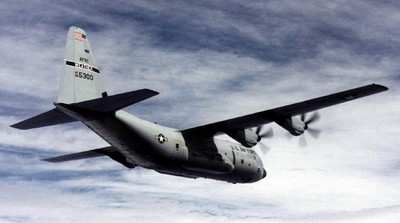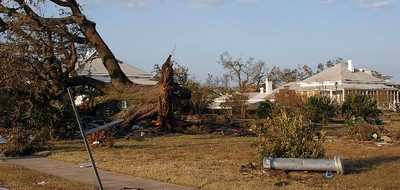WC-130J team tracks hurricanes with improved radar system
Experts at Edwards Air Force Base (CA) battled 155-mph winds and
penetrated two hurricanes 15 times recently to put the WC-130J
Hercules’ improved weather-radar system to the test.
Together with Air Force Reserve Command's 53rd Weather
Reconnaissance Squadron at Keesler Air Force Base, Miss., joint
test team experts flew multiple times into hurricanes Ivan and
Jeanne to test the aircraft’s weather-radar system. It is
designed to take weather avoidance software to the next level --
weather reconnaissance, said Mark Miller, 418th Flight Test
Squadron project engineer.

The WC-130J is a special weather reconnaissance version of the
new C-130J Hercules cargo plane. People of the 53rd WRS fly it into
the eye of hurricanes to retrieve critical information about active
storms.
The tests were part of the final development phase planned for
the WC-130J weather-radar conversion and validated work done in
June to fine-tune the radar and prepare for hurricane penetration
missions, Miller said.
"Currently, the C-130J's weather radar can't penetrate the
high-density rain fields characteristic of hurricane conditions,"
said Maj. Clifton Janney, 418th FLTS project pilot and WC-130J
flight commander. "This weather avoidance radar operates outside
the hurricane and looks in."
With the new software modification, the low-powered
reconnaissance radar can investigate the storm from within,
collecting data on the winds and direction of the hurricane, and
provide real-time information to the National Hurricane Center in
Miami, Miller said.
"Flying through the storm, the reconnaissance weather officer
gives direction to the pilot based on the winds he's seeing on
radar," Major Janney said. "What he's trying to do is fix the
center position of the hurricane where there's no wind or very
light wind. This is called a fix mission; we fly through the eye to
fix the center of the hurricane."
He said the radar is used to find the eye and fine-tune that
position based on the winds. This fixed position is what the
hurricane center uses to determine the path of the hurricane, as
well as its speed.

Although only the initial results are in, Major Janney said the
radar pictures he saw were very good.
"We did find an anomaly and can't tell if it's in the hardware
or software," he said. "That needs to be run down before we know
how well the improved radar system performed. We think we have the
correct solution, but we need additional verification, validation
of the data, to determine our final test results."
Besides the radar-modification testing, the team also flew a new
propeller modification -- a propeller with metal covers on the
leading edge to protect its de-icing equipment, Miller said.
"In order to complete this supplementary testing, we had to seek
out extremely heavy rain and hail," he said.

Preliminary results show that the propeller performed quite
well, he said.
Overall, the WC-130J accomplished its hurricane fix mission,
proving the test team successful.
"There are some things that still need to be investigated like
lightening certification, but we are very close to a workable
solution," Major Janney said. "We are right on the cusp of having
all the answers and will soon be able to send this aircraft on its
way to operationally support the 53rd's 'Hurricane Hunter' mission;
a replacement airframe for their C-130H models."
The WC-130J will provide the 53rd WRS crews a more reliable
aircraft and ultimately increase mission effectiveness, he said.
Once in place, crew members will use it to conduct weather
reconnaissance for hurricanes in the fall and storms in the winter.
Until then, the aircraft will continue radar testing and supporting
the hurricane center by providing vital storm atmospheric
information throughout the 2004 hurricane season.
(ANN salutes Capt. Catie Hague, 95th Air Base Wing Public
Affairs)
 ANN's Daily Aero-Term (04.20.24): Light Gun
ANN's Daily Aero-Term (04.20.24): Light Gun Aero-News: Quote of the Day (04.20.24)
Aero-News: Quote of the Day (04.20.24) ANN's Daily Aero-Linx (04.21.24)
ANN's Daily Aero-Linx (04.21.24) Aero-News: Quote of the Day (04.21.24)
Aero-News: Quote of the Day (04.21.24) ANN's Daily Aero-Term (04.21.24): Aircraft Conflict
ANN's Daily Aero-Term (04.21.24): Aircraft Conflict





